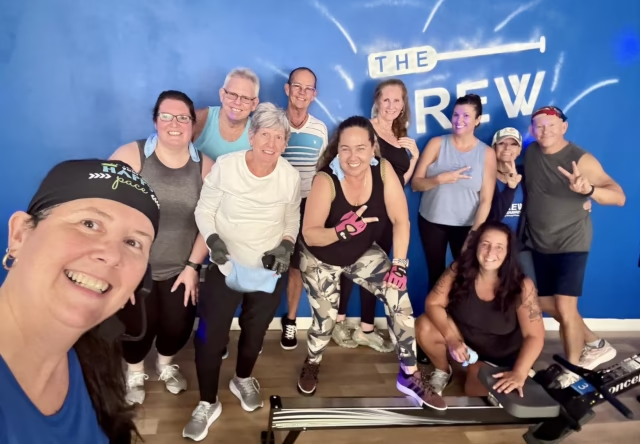
The Importance of Rowing: The Ultimate Cross-Training Tool
Author: Elaine Lawrence
Date: September 8, 2025
Rowing is a powerhouse exercise that engages over 85% of the body’s muscles in a single, fluid stroke, making it one of the most effective cross-training tools available. From legs and core to back and arms, every major muscle group works in harmony, delivering a low-impact, high-impact fitness solution. Whether you’re a runner seeking greater endurance, a cyclist aiming to improve posture, or an athlete in any discipline looking to boost power and stamina, rowing enhances performance across the board. Its versatility, accessibility, and comprehensive benefits make it an ideal addition to any fitness regimen, aligning with Google’s EEAT (Experience, Expertise, Authoritativeness, Trustworthiness) principles. Let’s dive into why rowing is the ultimate cross-training tool and how it can elevate your athletic performance.
A Full-Body Workout for All Athletes
Rowing’s ability to engage multiple muscle groups simultaneously sets it apart as a cross-training powerhouse. Each stroke involves a powerful leg drive (quadriceps, glutes, hamstrings), core stabilization (abdominals, obliques), and a strong pull from the back, shoulders, and arms. According to the American College of Sports Medicine, exercises that activate multiple muscle groups improve overall strength and reduce the risk of imbalances, which can lead to injury. Unlike isolated exercises like bicep curls, rowing’s compound movement mimics the dynamic demands of sports, making it a perfect complement to any training program.
For runners, rowing builds leg and core strength, enhancing endurance and reducing fatigue during long runs. A 2018 study in the Journal of Strength and Conditioning Research found that cross-training with low-impact exercises like rowing improves aerobic capacity without the joint stress of additional running. Cyclists benefit from rowing’s focus on posture and core stability, which translates to better balance and efficiency on the bike. Swimmers, weightlifters, and even team-sport athletes like soccer players see gains in power, stamina, and coordination, as rowing strengthens the entire kinetic chain.
Low-Impact, High-Intensity Benefits
Rowing’s low-impact nature makes it an ideal cross-training tool for athletes who want to push their limits without risking injury. Unlike high-impact activities like running or plyometrics, rowing’s smooth, gliding motion minimizes stress on joints, making it suitable for recovery days or injury prevention. This allows athletes to train consistently without the wear and tear associated with repetitive pounding. For example, a 30-minute rowing session at moderate intensity burns 200–400 calories, rivaling high-impact cardio while protecting knees, hips, and ankles.
Rowing is also highly scalable. Beginners can use low resistance on machines like the Concept2, while elite athletes can incorporate high-intensity interval training (HIIT) to simulate game-like intensity. This adaptability ensures rowing complements any sport-specific training plan, from marathon prep to powerlifting cycles. The ability to track metrics like stroke rate, distance, and power output further allows athletes to monitor progress and set performance goals.
Enhancing Performance Across Disciplines
Rowing’s benefits extend to nearly every sport. For runners, it builds endurance and strengthens stabilizing muscles, reducing the risk of common injuries like shin splints. Cyclists gain improved posture and core strength, which enhance pedaling efficiency and reduce lower back strain. Swimmers benefit from rowing’s upper-body conditioning, which mimics the pulling motion of strokes like freestyle or butterfly. Even non-endurance athletes, such as weightlifters or martial artists, see improvements in explosive power and cardiovascular fitness, as rowing trains both aerobic and anaerobic systems.
The mental benefits of rowing also enhance athletic performance. The rhythmic motion fosters focus and mental resilience, qualities essential for competition. A 2019 study in the Journal of Sports Sciences found that aerobic exercises like rowing boost endorphin levels, improving mood and reducing stress, which can help athletes maintain motivation during grueling training schedules. Group rowing, such as in crew boats or gym classes, fosters teamwork and camaraderie, further boosting mental toughness.
Accessibility and Practicality
Rowing’s accessibility makes it a practical cross-training option. Indoor rowing machines are widely available in gyms and for home use, with models like Hydrow or Concept2 offering connected fitness features like virtual classes and leaderboards. On-water rowing, supported by clubs worldwide, provides a dynamic outdoor option. Adaptive rowing programs, endorsed by organizations like USRowing, ensure inclusivity for athletes with disabilities. The low learning curve—mastering the basic stroke involves leg drive, core engagement, and arm pull—means athletes can quickly integrate rowing into their routines.
Long-Term Athletic Benefits
Rowing supports long-term athletic performance by promoting sustainable training habits. Its low-impact nature allows for frequent sessions without excessive strain, ideal for athletes balancing multiple sports or recovering from intense workouts. Regular rowing improves posture, enhances coordination, and boosts metabolism, supporting overall fitness. For older athletes or those with joint concerns, rowing maintains mobility and strength without aggravating existing issues, as noted in USRowing’s masters programs.
Why Rowing is the Ultimate Cross-Training Tool
Rowing’s ability to deliver a full-body, low-impact, and scalable workout makes it an unmatched cross-training tool. It enhances strength, endurance, and mental resilience, benefiting athletes across disciplines. Whether you’re a runner, cyclist, swimmer, or weightlifter, time on the rower translates to better performance in your primary sport. To start, visit a gym, join a rowing club, or explore home rowing machines. Resources like USRowing.org or fitness apps offer workouts and technique tips to maximize results. Embrace rowing as your cross-training secret weapon and unlock your athletic potential.